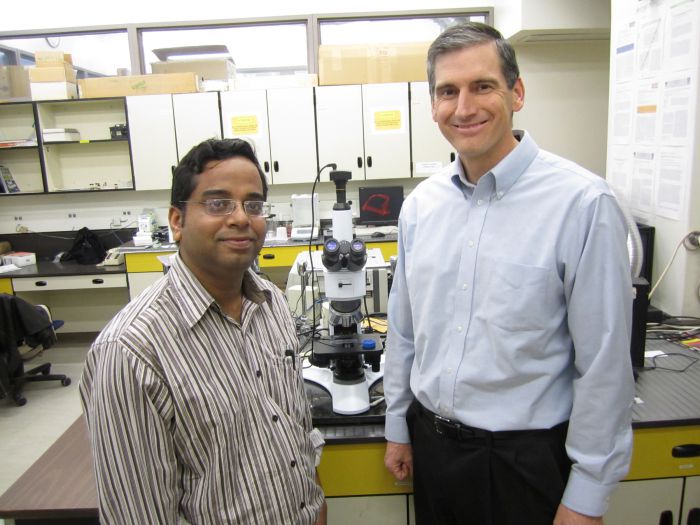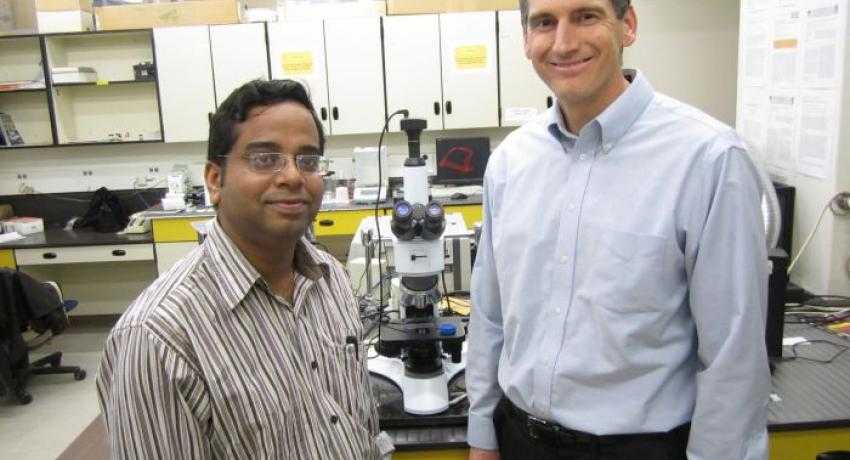Utah researchers cooking up a more affordable solar semiconductor
 Researchers at the University of Utah are working to see if they can make solar a bit more like a modern American meal – something affordable you whip up in the microwave.
Researchers at the University of Utah are working to see if they can make solar a bit more like a modern American meal – something affordable you whip up in the microwave.
Michael Free, a professor of metallurgical engineering, and Prashant Sarswat, a research associate and the study’s primary author, have used a microwave to cook up a nanocrystal semiconductor. They believe their semiconductor, which uses cheap and abundant materials, can be used to increase solar photovoltaic cell efficiency and affordability.
They have discovered that CZTS – which includes relatively cheap metals copper, zinc, tin and sulfide – needs 18 minutes in the microwave for the nanocrystals to grow to exactly the right size to become a good semiconductor for solar.
“We were working with the CZTS PV material before making this from the microwave oven,” Sarawat writes in an email.
But the researchers got access to a microwave and decided to try using it to build the semiconductors up more quickly. It usually requires a four-hour or longer process, according to a report on Phys.org.
It’s not unusual for metallurgists to use microwaves to manipulate compounds. The trick is in finding the right time to cook the ingredients into exactly the right formation.
University of Oregon researchers have been working on another microwave method for producing cheaper semiconductors as well.
Sarswat said the Utah researchers will keep working in the lab to refine the microwave process for their semiconductors.
“There is good potential for scaling up of this technology,” Sarswat said. “However, we are at the very beginning and hence it is difficult to predict exact timing.”
Free told Phys.org that he could imagine seeing the semiconductors used in new technologies within five years. But that all depends on how future lab tests go, Sarswat said.
“The path to commercialization depends on success of this material at lab scale,” he said. “If, somehow, this material shows good device performance, investment of time and research on the lab scale will drive success.”
He said there are industrial microwaves on the market that could be used to produce the semiconductors on a commercial scale if the researchers can prove it effectiveness in the lab.
CZTS semiconductors have been around for more than 10 years and researchers have known they could work for solar photovoltaic applications. But they only achieve a 12 percent conversion efficiency and they didn’t offer a lot of other advantages. So, researchers haven’t done a lot with them until now. Because they use inexpensive materials, the microwave method could make them marketable and could drive down the cost of solar.
“I believe short duration of synthesis will be an added advantage and certainly bring down cost of production,” Sarswat said.
He added that grant funding will be important to advancing the research.




